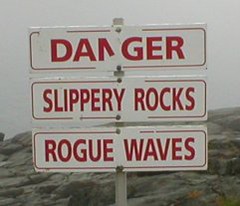Santa Cruz del Norte
We took a scooter tour of Santa Cruz del Norte, a town about 1/2 hour from the resort. There were five or six of us plus our guide.
Santa Cruz del Norte is a fishing community situated on a river; it's also home to the country's largest rum distillery, about which more later.

This is the monument to Cuba's greatest cultural, social and political hero, José Martí.
He was critical to shaping Fidel Castro's politics, and you're gonna find monuments to him in every town and city in Cuba.

We went down to the docks; as someone who comes from a fishing community I was really interested in seeing the types of boats and gear they use here as compared to home.

Some graffiti near the wharves. Definitely not state-sanctioned, I don't think. Note the DJing fish.

The ubiquitous Ché.

Part of the main street.

The Habana Club factory as seen from across the river. We'd also stopped right beside it on the road into town but I didn't get a snap. Like most industrial works in Cuba, it looked completely run-down, decrepit, and derelict, and if we had just passed it on the road we would have assumed it was entirely shut down and decaying. Instead, we are informed, it is the largest and most productive rum distillery in the country. So it goes here where there is no access to resources or tools for repair and maintenance. Viva Cuba indeed.

The ice-cream shop in town. Believe me, the Cubans love their ice-cream. There's one of these shops in every little town you pass through. A local boy waits patiently, Cuban pesos in hand, while the server gets his fix.

Part of the downtown shopping district.

One of the main local stores.
The signs translate to "Victory of the resolve, the justice and the hope"
"All for the revolution"

Buying vegetables from the back of a truck...

...and rice and beans on the sidewalk.
These stores I've photographed are stores that tourists rarely venture into. This isn't a tourist destination; it's a working Cuban community. These stores trade in Cuban Pesos - not Cuban Convertible Pesos ("tourist money").
We've seen these stores before but never went inside - it felt very voyeuristic to think of going in to gawk at what the locals can - or can't - buy. But this time, with a Cuban guide, we got a good look inside them. We visited four or five of them, the first time we've really gotten a look at how Cubans are able to shop. And what we saw was really eye-opening. We'd read about it, dozens of times. But we'd never actually seen it.
We were asked not to take photos inside, and we respected that. The stores look very much like North American "five and dime" or dry goods stores from the 1920s to the 60s - rows of shelves from floor to ceiling behind banks of glass cabinets. The first one we visited had the oddest collection of items on display - switchplates and outlet covers; automotive parts; underwear. Hanging on the walls were odd assortments of clothing - sports jerseys, spandex tights (well, that explains why everyone on the streets seems to wear them), sequined clubwear. Another we visited had furniture and appliances - all very modern. A full-sized refrigerator will set you back $780 Cuban Pesos; a television, about $300. (To put this into perspective, our guide told us that his salary converts to about $140 Cuban Convertible Pesos a year; that is about $3500 Cuban Pesos.) There were cheap glass-topped dining room and coffee tables and electric fans and a remarkably snazzy gas range.
The oddity and randomness of the items available for purchase explains a lot about the reality of purchasing power in Cuba. You may need a box of nails; but when you go to the store, the store has light switches and outlet covers, and that's about it for building materials. Come back next month to see if there are any nails. Or the month after that.

On the way back to the resort we stopped at a gen-u-wine Cuban truckstop. There was a bar, a restaurant, a shop, and three big, battered, Cuban transport trucks parked out front whose drivers were taking a break on the drive to La Habana, about another hour away. The bar claims to make "the best Piña Coladas in Cuba", and we were invited to try one - JUST ONE, the guide noted. (I'm sure he had no interest in trying to shepherd a bunch of drunk tourists back to our resort on two wheels.)
A fascinating trip and a glimpse into a bit of Cuba we hadn't seen before.
ronnie




